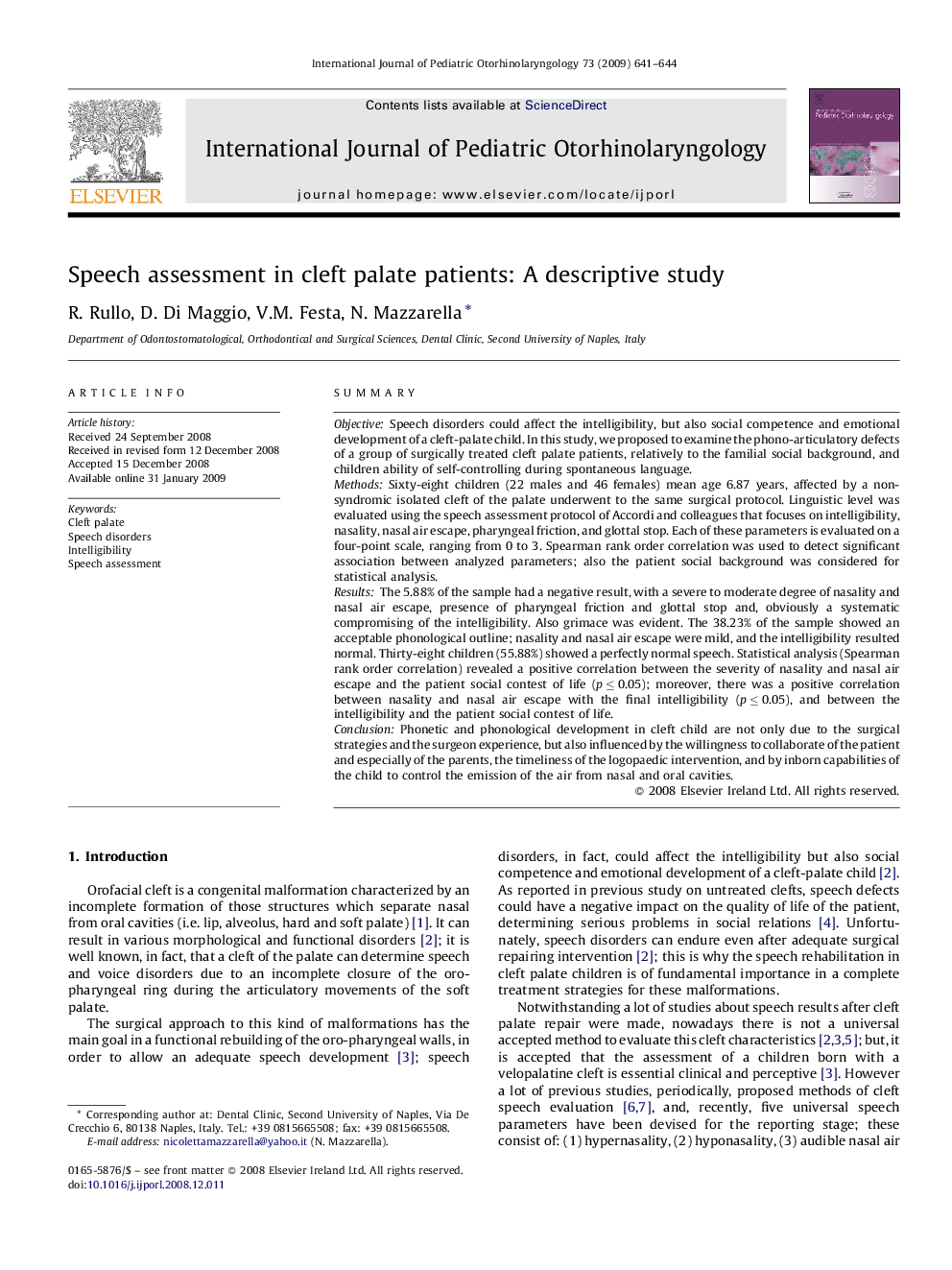| کد مقاله | کد نشریه | سال انتشار | مقاله انگلیسی | نسخه تمام متن |
|---|---|---|---|---|
| 4115310 | 1606070 | 2009 | 4 صفحه PDF | دانلود رایگان |

SummaryObjectiveSpeech disorders could affect the intelligibility, but also social competence and emotional development of a cleft-palate child. In this study, we proposed to examine the phono-articulatory defects of a group of surgically treated cleft palate patients, relatively to the familial social background, and children ability of self-controlling during spontaneous language.MethodsSixty-eight children (22 males and 46 females) mean age 6.87 years, affected by a non-syndromic isolated cleft of the palate underwent to the same surgical protocol. Linguistic level was evaluated using the speech assessment protocol of Accordi and colleagues that focuses on intelligibility, nasality, nasal air escape, pharyngeal friction, and glottal stop. Each of these parameters is evaluated on a four-point scale, ranging from 0 to 3. Spearman rank order correlation was used to detect significant association between analyzed parameters; also the patient social background was considered for statistical analysis.ResultsThe 5.88% of the sample had a negative result, with a severe to moderate degree of nasality and nasal air escape, presence of pharyngeal friction and glottal stop and, obviously a systematic compromising of the intelligibility. Also grimace was evident. The 38.23% of the sample showed an acceptable phonological outline; nasality and nasal air escape were mild, and the intelligibility resulted normal. Thirty-eight children (55.88%) showed a perfectly normal speech. Statistical analysis (Spearman rank order correlation) revealed a positive correlation between the severity of nasality and nasal air escape and the patient social contest of life (p ≤ 0.05); moreover, there was a positive correlation between nasality and nasal air escape with the final intelligibility (p ≤ 0.05), and between the intelligibility and the patient social contest of life.ConclusionPhonetic and phonological development in cleft child are not only due to the surgical strategies and the surgeon experience, but also influenced by the willingness to collaborate of the patient and especially of the parents, the timeliness of the logopaedic intervention, and by inborn capabilities of the child to control the emission of the air from nasal and oral cavities.
Journal: International Journal of Pediatric Otorhinolaryngology - Volume 73, Issue 5, May 2009, Pages 641–644